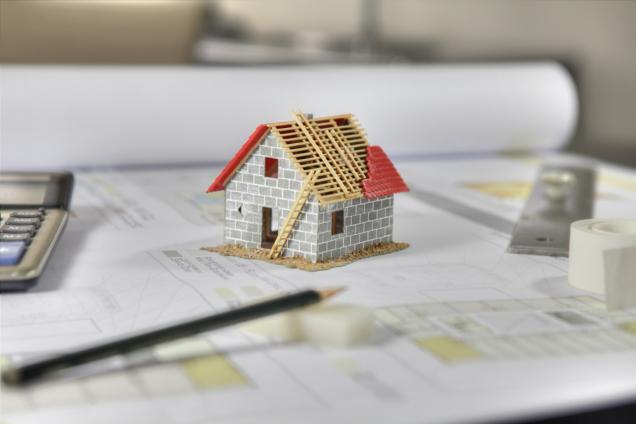
Exploring the Benefits of Green Spaces in Urban Architecture
By Forrest Small Homes|April 12, 2024
In the sphere of urban development, the essential role played by green spaces, which primarily constitute public parks, gardens, urban woodlands and other greenery-laden areas, can't be overstated. These natural sanctuaries present a delightful juxtaposition to the urban landscape dominated by concrete edifices and towering skyscrapers. Green spaces offer citified inhabitants a much-needed refuge within their bustling cities, a place where they can escape to, to pause and breathe. Today, more than ever, we recognise the profound importance of integrating green spaces into the blueprint of urban architecture and urban living.
Enhancing Urban Aesthetics through Green Spaces
The transformative impact of green spaces on the urban aesthetic is both tremendous and undeniable. They inject vibrancy and life in the otherwise monotonous cityscape filled with grey-toned concrete structures, providing a visual stimulus that softens the harsh lines of the urban framework. Internationally recognised cities, such as the meticulously planned city-state of Singapore, christened as the 'City in a Garden', and Vancouver, a city acclaimed for its verdant cityscape, stand as shining examples of the dramatic enhancement brought about by green spaces.
Architects, city planners and landscape designers work synergistically to infuse these green zones into city layouts, managing to strike a perfect balance between enhancing aesthetic allure and maintaining functionality. With their ability to upgrade the visual appeal of an area, green spaces unsurprisingly can boost property values, leading indirectly to an enhanced economic health of urban areas.
Green Spaces and Mental Well-being
Ample scientific studies reinforce the positive correlation between green spaces and mental health. By serving as serene spots amid the urban chaos, green spaces can effectively aid in stress-attenuation. They shelter urban dwellers from the constant inundation of sensory information that city-life tends to bring, providing moments of tranquillity and mindfulness, thereby furnishing mental relief and rejuvenation. It's no wonder that the happiness quotient of an urban resident is often irrevocably tied to the accessibility and availability of these peaceful havens peppered within their sprawling cities.
The Positive Influence of Green Spaces on Physical Health
Extending beyond the realm of aesthetics and mental health, green spaces influence physical health as well. These prime areas encourage citizens to engage in various outdoor activities such as walking, running, cycling or simply playing a sport, therefore promoting physical fitness. In addition, through the process of photosynthesis, green spaces help to purify the urban air – absorbing pollutants and releasing fresh oxygen – essentially functioning as the city’s lungs.
Furthermore, there exists compelling evidence, backed by research, which underlines the correlation between exposure to green environments and extended life expectancy as well as improved health outcomes. In the scorching heat of the summers, these afforested zones double up as cooling centres for urban folks, offering respite from the intensified urban heat island effects.
Green Spaces - A Platform for Community Building
From a socio-cultural perspective, green spaces can be viewed as natural stages that facilitate social interaction amongst urban residents. They act as melting pots of diverse cultures, empowering community bonding and camaraderie. The platform they provide for hosting various communal events, ranging from farmer’s markets to music festivals, is indispensable. With their ability to attract people from different walks of life, green spaces present unique opportunities for multi-cultural interactions and exchange.
Citing an impressive example, consider the metamorphosis of the High Line Park in New York – an abandoned rail track that’s now a beautiful elevated park. The transmogrification of this green space into an urban hotspot has significantly transformed its neighbourhood, renewing the sense of community spirit and rejuvenating its socio-cultural landscape.
Leveraging Green Spaces for Environmental Sustainability
Green spaces serve a purpose greater than mere aesthetics or physical and mental health benefits. They play a pivotal role in the maintenance of biodiversity within the sterile confines of concrete-dominant city landscapes. These lively spaces offer sanctuary to myriad species, thereby fostering an environment for a rich array of wildlife, which leads to preserving the delicate ecological balance within municipalities.
By absorbing detrimental greenhouse gases and counterbalancing them with fresh oxygen, green spaces provide a tangible solution for mitigating the sprawling impact of climate change. Moreover, with their ability to absorb rainfall, regulate the water table, and reduce the risks of flooding, they are valuable elements in rainwater management within urban settings. The promotion of urban farming and tree planting in green spaces not only assists in creating carbon sinks but also inspires citizens to learn about sustainable residential architecture, thus making a significant contribution to overall urban sustainability.
Conclusion
In essence, green spaces are irreplaceable assets in the realm of urban life. They amalgamate the components of aesthetic enhancement, environmental sustainability, health improvement, and social development, redefining the city's vitality and opening a pathway to improved quality of urban living. Driven by their strategic importance, city planners, architects, and citizens must work in unison to prioritise, preserve and further develop these urban resources. The inclusion of green spaces in the urban stage is not a niche luxury; it is an entrenched necessity in shaping a sustainable and balanced urban future.
Enhancing Urban Aesthetics through Green Spaces
The transformative impact of green spaces on the urban aesthetic is both tremendous and undeniable. They inject vibrancy and life in the otherwise monotonous cityscape filled with grey-toned concrete structures, providing a visual stimulus that softens the harsh lines of the urban framework. Internationally recognised cities, such as the meticulously planned city-state of Singapore, christened as the 'City in a Garden', and Vancouver, a city acclaimed for its verdant cityscape, stand as shining examples of the dramatic enhancement brought about by green spaces.
Architects, city planners and landscape designers work synergistically to infuse these green zones into city layouts, managing to strike a perfect balance between enhancing aesthetic allure and maintaining functionality. With their ability to upgrade the visual appeal of an area, green spaces unsurprisingly can boost property values, leading indirectly to an enhanced economic health of urban areas.
Green Spaces and Mental Well-being
Ample scientific studies reinforce the positive correlation between green spaces and mental health. By serving as serene spots amid the urban chaos, green spaces can effectively aid in stress-attenuation. They shelter urban dwellers from the constant inundation of sensory information that city-life tends to bring, providing moments of tranquillity and mindfulness, thereby furnishing mental relief and rejuvenation. It's no wonder that the happiness quotient of an urban resident is often irrevocably tied to the accessibility and availability of these peaceful havens peppered within their sprawling cities.
The Positive Influence of Green Spaces on Physical Health
Extending beyond the realm of aesthetics and mental health, green spaces influence physical health as well. These prime areas encourage citizens to engage in various outdoor activities such as walking, running, cycling or simply playing a sport, therefore promoting physical fitness. In addition, through the process of photosynthesis, green spaces help to purify the urban air – absorbing pollutants and releasing fresh oxygen – essentially functioning as the city’s lungs.
Furthermore, there exists compelling evidence, backed by research, which underlines the correlation between exposure to green environments and extended life expectancy as well as improved health outcomes. In the scorching heat of the summers, these afforested zones double up as cooling centres for urban folks, offering respite from the intensified urban heat island effects.
Green Spaces - A Platform for Community Building
From a socio-cultural perspective, green spaces can be viewed as natural stages that facilitate social interaction amongst urban residents. They act as melting pots of diverse cultures, empowering community bonding and camaraderie. The platform they provide for hosting various communal events, ranging from farmer’s markets to music festivals, is indispensable. With their ability to attract people from different walks of life, green spaces present unique opportunities for multi-cultural interactions and exchange.
Citing an impressive example, consider the metamorphosis of the High Line Park in New York – an abandoned rail track that’s now a beautiful elevated park. The transmogrification of this green space into an urban hotspot has significantly transformed its neighbourhood, renewing the sense of community spirit and rejuvenating its socio-cultural landscape.
Leveraging Green Spaces for Environmental Sustainability
Green spaces serve a purpose greater than mere aesthetics or physical and mental health benefits. They play a pivotal role in the maintenance of biodiversity within the sterile confines of concrete-dominant city landscapes. These lively spaces offer sanctuary to myriad species, thereby fostering an environment for a rich array of wildlife, which leads to preserving the delicate ecological balance within municipalities.
By absorbing detrimental greenhouse gases and counterbalancing them with fresh oxygen, green spaces provide a tangible solution for mitigating the sprawling impact of climate change. Moreover, with their ability to absorb rainfall, regulate the water table, and reduce the risks of flooding, they are valuable elements in rainwater management within urban settings. The promotion of urban farming and tree planting in green spaces not only assists in creating carbon sinks but also inspires citizens to learn about sustainable residential architecture, thus making a significant contribution to overall urban sustainability.
Conclusion
In essence, green spaces are irreplaceable assets in the realm of urban life. They amalgamate the components of aesthetic enhancement, environmental sustainability, health improvement, and social development, redefining the city's vitality and opening a pathway to improved quality of urban living. Driven by their strategic importance, city planners, architects, and citizens must work in unison to prioritise, preserve and further develop these urban resources. The inclusion of green spaces in the urban stage is not a niche luxury; it is an entrenched necessity in shaping a sustainable and balanced urban future.



